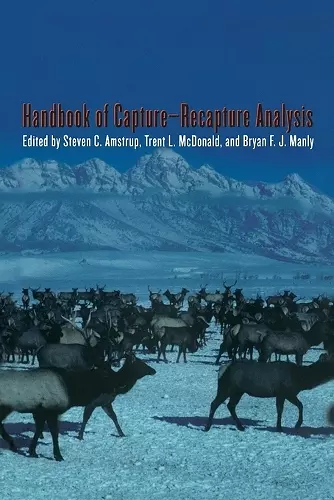Handbook of Capture-Recapture Analysis
Advanced Statistical Methods for Ecological Research
Steven C Amstrup editor Trent L McDonald editor Bryan F J Manly editor
Format:Paperback
Publisher:Princeton University Press
Published:9th Dec '05
Currently unavailable, and unfortunately no date known when it will be back

This comprehensive guide equips biologists with advanced statistical methods for analyzing capture-recapture data, bridging gaps between fieldwork and data analysis.
The Handbook of Capture-Recapture Analysis serves as an essential resource for biologists seeking to grasp the latest statistical techniques for analyzing capture-recapture data. This comprehensive guide not only introduces the methods necessary for effective data analysis but also delves into the underlying theory that supports these methods. Its target audience includes biologists, biometricians, statisticians, and students from both disciplines, making it a valuable tool for anyone involved in the capture-recapture process.
Field biologists often venture out in varying weather conditions to capture and mark diverse animal species. Once back in their offices, statisticians work to develop analytical models that interpret the data collected by these biologists. However, there is often a disconnect between the two professions regarding their respective roles. The Handbook of Capture-Recapture Analysis addresses this gap, enabling biologists to better understand advanced statistical methods while also providing statisticians with insights into the practical challenges faced by biologists in the field.
Reliable results from capture-recapture studies are crucial for addressing significant ecological inquiries, such as population trends and the prevalence of specific characteristics within animal populations. Given the unpredictability of these populations during studies, sophisticated models are essential for translating data into meaningful ecological insights. This book, authored by leading experts in capture-recapture analysis, presents contemporary methods for data analysis and explains the theoretical framework behind these techniques. It is designed to be thorough, concise, and accessible, ensuring its utility for a wide range of readers engaged in capture-recapture research.
Winner of the 2007 Wildlife Publications Award in the Outstanding Edited Book Category, The Wildlife Society "This is a good book for anyone with a basic understanding of capture-recapture models who wants to develop their knowledge and apply these techniques to their own data. Exactly what a handbook should be!"--Laura Cowen, Quarterly Review of Biology "The editors have done an admirable job in trying to make complex capture-recapture models accessible to a greater range of field-based ecologists."--David Wilson, Austral Ecology "The capture, tagging, and subsequent recapture of animals, birds, and fish is the field biologists most important tool for enumerating and quantifying the status of wild populations. This mark-recapture data must be subjected to sophisticated statistical analyses back in the office, and there can be a disconnect between those who do the field work and those who do the analyses. This text, written by authors with expertise in the field and in the office, successfully bridges that gap. This handbook will be immediately useful to ecologists, biologists, and statisticians."--Northeastern Naturalist
- Winner of TWS Wildlife Publication Awards: Editorship 2007
ISBN: 9780691089683
Dimensions: unknown
Weight: 454g
336 pages